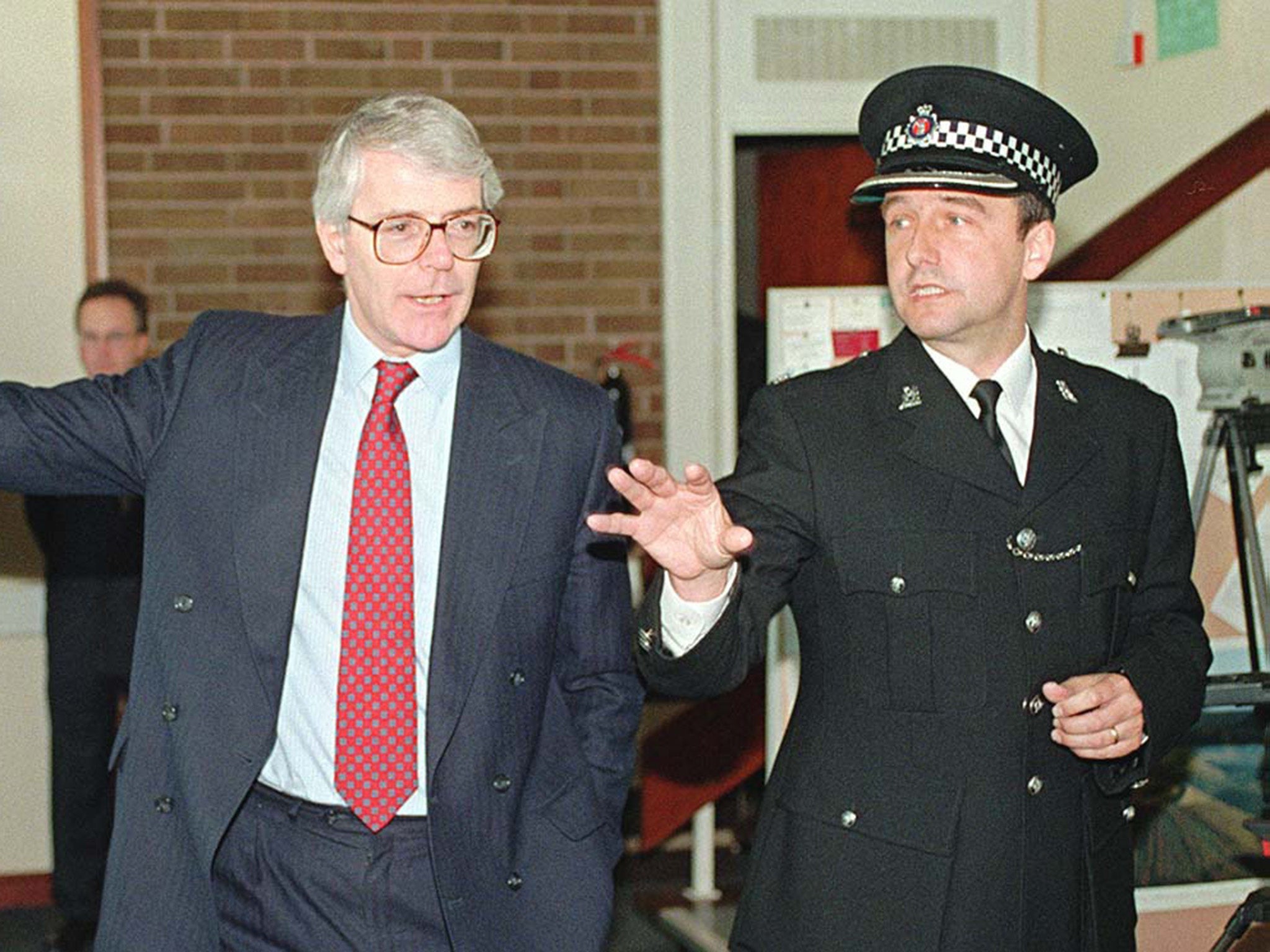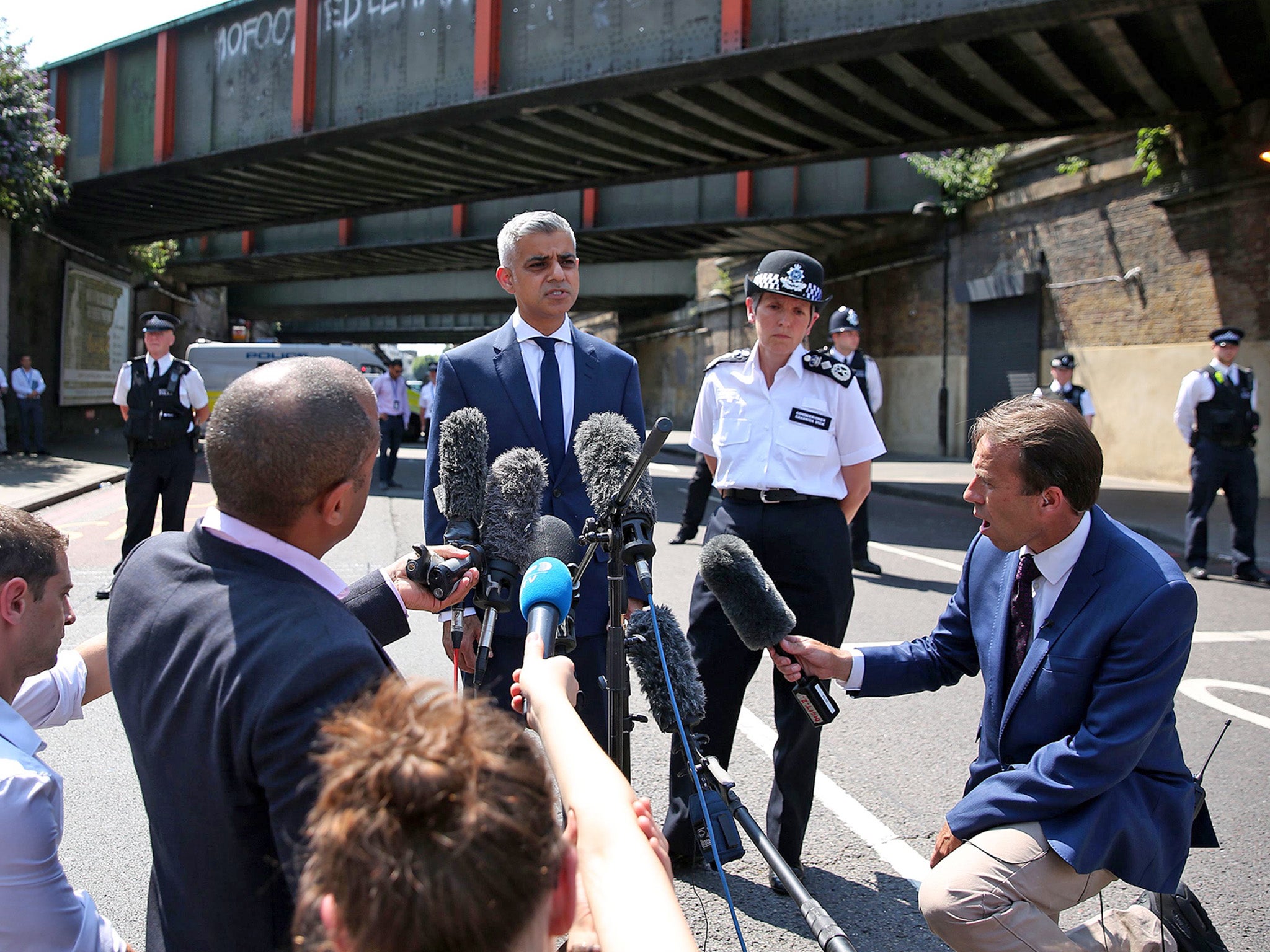Law and order breaking down but 'there is no link between rising crime rates and fewer police', Tories claim
Police numbers falling, forensic science in disarray, court system severely under-funded, and assaults on prison staff rising – and don't mention the probation service... all this and still the Tories maintain law and order is a priority

Your support helps us to tell the story
From reproductive rights to climate change to Big Tech, The Independent is on the ground when the story is developing. Whether it's investigating the financials of Elon Musk's pro-Trump PAC or producing our latest documentary, 'The A Word', which shines a light on the American women fighting for reproductive rights, we know how important it is to parse out the facts from the messaging.
At such a critical moment in US history, we need reporters on the ground. Your donation allows us to keep sending journalists to speak to both sides of the story.
The Independent is trusted by Americans across the entire political spectrum. And unlike many other quality news outlets, we choose not to lock Americans out of our reporting and analysis with paywalls. We believe quality journalism should be available to everyone, paid for by those who can afford it.
Your support makes all the difference.Law and order is supposed to be a high priority for Conservative governments. Yet recently the Tories have been falling well short. This was the case when David Cameron was in charge, and now with Theresa May in Downing Street the same thing has happened again. Here is a major puzzle.
Take police numbers as an indicator, although it is not the only way of measuring the intensity of the fight against crime. After many years during which police forces steadily expanded, something suddenly changed when the Conservatives got back into power in 2010.
That year has turned out to be the peak for police numbers. Since 2010, according to the House of Commons Library, the total has fallen each year. At 31 March 2017 there were 150,000 police officers operating within the United Kingdom. This was a reduction of 3.3 per cent compared to 2003 and a decrease of 12.4 per cent from 2010. Between 31 March 2010 and 2017, police officer strength fell in the 43 forces by just under 20,600 – a 17 per cent fall.
This was a dramatic reversal of trend. In the 1979 general election, for instance, Margaret Thatcher told voters: “The next Conservative government will spend more on fighting crime even while we economise elsewhere.” She went on to recruit more police officers.
Her successor as prime minister, John Major, maintained this policy with the result that, by the 1992 election, John Major could boast that spending on the police has doubled since 1979 after allowing for inflation. There were now about 16,000 more police officers than there had been in 1979. The Labour government that took office in 1997 followed suit. Total police officer strength in the UK increased year on year between 2003, when there were 155,000 officers, and 2010, when there were just over 171,600.

To disguise the fall in police numbers over which David Cameron was presiding, the prime minister announced a “less paperwork” policy. “The police should be focusing on police work, not on paperwork.” He said a Conservative government would reduce the amount of “paperwork that the police have to deal with”.
In fact, a “less paperwork” policy was all that could be afforded, for Cameron’s colleague George Osborne, as the new chancellor, had just introduced his grim austerity policy. Government departments had to make a real cut of around 25 per cent in their spending over the four years, 2011 to 2015. The consequence for London, for instance, is that the funding of the Metropolitan Police is due to have fallen by £1bn between 2010 and 2021 – £730m to date, with a further £335m to come.
So in case people should be concerned by the fall in police numbers, government ministers began to deploy a new argument – that there was no link between that fall and crime rates. As home secretary, Amber Rudd even managed to publish a 114-page Serious Violence Strategy that failed to make any reference to police cuts.
However, Cressida Dick, the Metropolitan Police Commissioner, is having none of this. Admitting to the Home Affairs Select Committee recently that serious violence in London was “too high”, she added that “I would be naive to suggest that reduced numbers of officers on the street, for a whole variety of reasons, including – and I’m talking across the country here – reduced officer numbers overall, has had no impact”.

Lynne Owens, the director general of the National Crime Agency and Sara Thornton, the National Police Chiefs’ Council chairwoman, backed up Dick. They gave examples of how cash shortages were posing a risk to public safety. Owens said: “The whole system needs a different approach to funding to make sure we are as good as we all want us to be.” Thornton added: “There is undoubtedly a capacity issue in neighbourhood policing ... it does need some extra investment.”
Then last week, London’s mayor, Sadiq Khan, said that 2018 could turn out to be “the bloodiest year in the capital for more than a decade” because of escalating gun and knife crime. And referring to police numbers he added that there were now fewer than 30,000 officers on the streets for the first time since 2003.
In discussing the prevention of crime, however, one can focus too much on police numbers. The detection of crime, for instance, requires an efficient system of forensic laboratories as well as police officers on the streets. The bringing of the guilty to justice requires an effective courts system. The prevention of reoffending means that prisons should be more than institutions that simply lock up criminals and that the probation services should also work well.
Unfortunately it is questionable whether any of these requirements are being met. For instance Dr Gillian Tully, the forensic regulator, had this to say in her latest annual report: not all practitioners “are well supported by the systems within which they work. Continuing downward pressure on cost, which affects both commercial and government-funded organisations, has eroded the time available for professional development and even the availability of scientific literature.” This follows the closure of the Forensic Science Service in 2012 on the grounds that the private sector could take over its work and be more effective than the government-owned body had been. This has proved to be a fallacy.
Effective courts system? Believe it or not, barristers have just this week voted by a narrow margin to end their dispute with the government over legal aid funding. To make their point, more than 100 sets of legal chambers had refused to take on new cases. As the Bar Council noted despairingly, it is concerned by the state of the '“whole of the justice system” and its lack of priority in government, its desperate need for proper, increased funding and “the state of our courts and infrastructure and access to those courts”. In short, the whole justice system is in a mess.
So let’s keep a running list of the deficiencies in law and order noted so far – police numbers falling, forensic science work in disarray, court system severely under-funded. What about the prisons and the probation services?

As for prisons, we should listen to the dire comments of Phil Wheatley, who was director of the prison service from 2003 to 2010. Assaults between prisoners have doubled since 2010 and attacks on staff have tripled. Suicides peaked at 122 deaths in 2016 and fell to 70 last year, but the most recent official statistics showed self-harm incidents at a record high of almost 12,000 in just three months. This follows a sharp reduction in spending on the prison system and a yo-yo in policies as six justice secretaries came and went in a short space of time.
But government ministers can always find excuses. David Gauke, the present justice secretary, says the problems are all down to the spread of psychoactive drugs known as legal highs.
But the most crucial measurement of the effectiveness of prisons is the reoffending rate. Do ex-prisoners go straight back to a life of crime or not? Here are the international comparisons: in England and Wales, 49.2 per cent of prisoners reoffend within a year of release – a figure which increases to 65.5 per cent for prisoners given sentences of less than a year. In contrast, Norway has a reoffending rate of 20 per cent, Australia 39 per cent, Japan 43 per cent, Scotland 50 per cent, the United States 52 per cent and Ireland 62 per cent. We are among the also-rans.
Probation services? They are have found themselves in the same sorry state as the other law and order institutions mentioned above. Probation services, whose main task is to rehabilitate convicted criminals so that that they do not reoffend, have also been subjected to the rigours of the market. This so-called reform has turned into a disaster.
See what HM chief inspector of probation, Dame Glenys Stacey, wrote in her most recent report: “I question whether the current model for probation can deliver sufficiently well. Above all, a close, forthcoming and productive relationship between an individual and their probation worker is key. This is where skilled probation staff add most value, by motivating offenders, working continuously with them to bring about change, and at the same time protecting the public from harm.”
“Yet,” she went on “in some {cases}, individuals meet with their probation worker in places that lack privacy, when sensitive and difficult conversations must take place. Some do not meet with their probation worker face-to face. Instead, they are supervised by telephone calls every six weeks or so from junior professional staff carrying 200 cases or more.” And she adds this final sentence: “I find it inexplicable that, under the banner of innovation, these developments were allowed.”
You could say that about all the recent reforms of the system of law and order.
Join our commenting forum
Join thought-provoking conversations, follow other Independent readers and see their replies
Comments